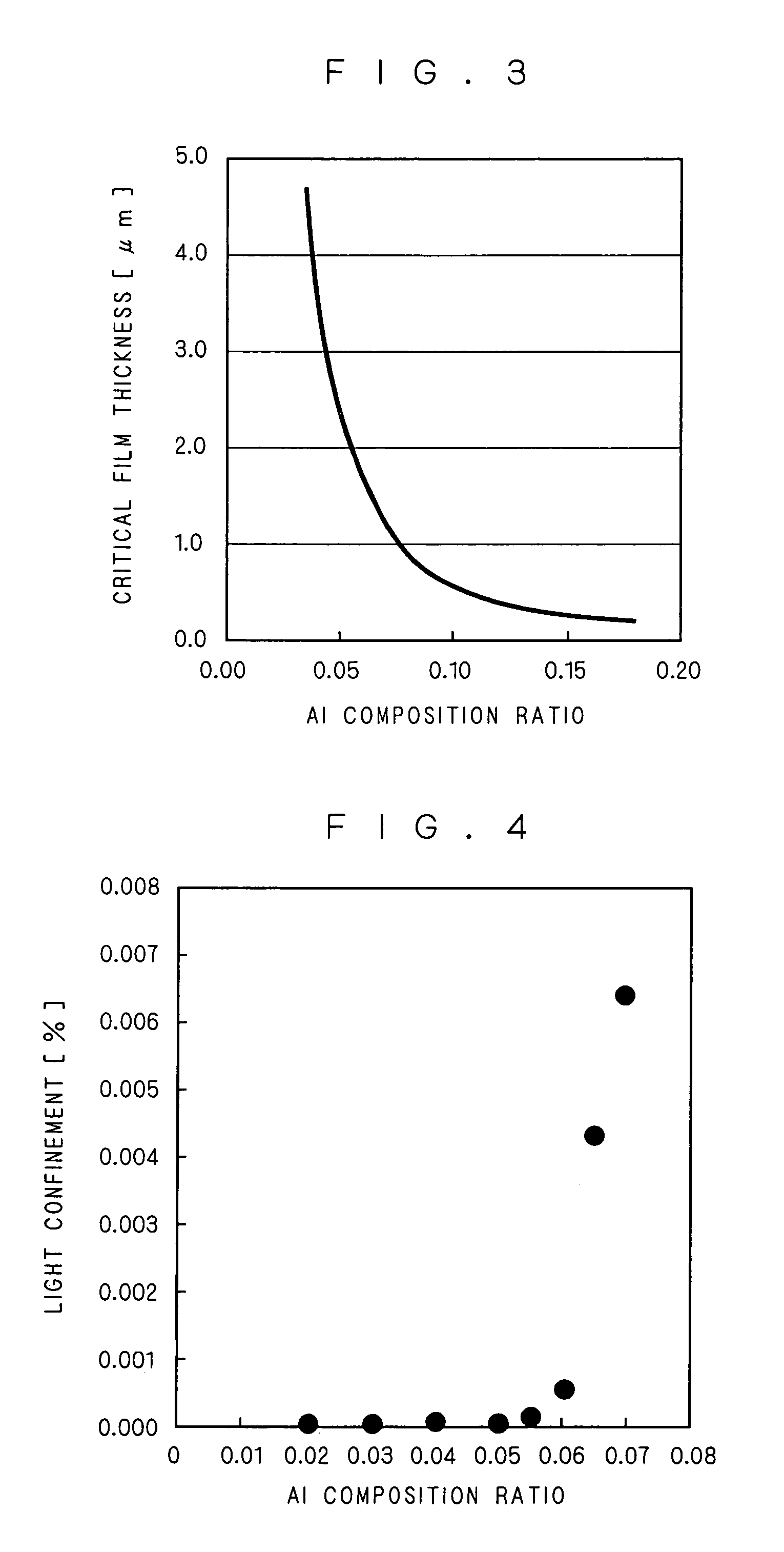Semiconductor light emitting device
a technology of light-emitting devices and semiconductors, which is applied in the direction of semiconductor lasers, nanotechnology, lasers, etc., can solve the problems of significant cracks or dislocation, significant increase in threshold values, and character degradation, and achieve good ffp characteristics
- Summary
- Abstract
- Description
- Claims
- Application Information
AI Technical Summary
Benefits of technology
Problems solved by technology
Method used
Image
Examples
first preferred embodiment
[0037]FIG. 1 is a sectional view illustrating the structure of a semiconductor light emitting device according to the present embodiment. This semiconductor light emitting device (nitride-based semiconductor laser) has a ridge structure and SCH structure.
[0038]An n-type GaN buffer layer 2 is formed on a Ga surface serving as a main surface of a GaN substrate 1 in order to reduce surface irregularities of the GaN substrate 1 to allow upper layers to be stacked thereon as flat as possible. An n-type AlGaN cladding layer (which may hereinafter be briefly referred to as an n-type cladding layer) 3 is formed on the n-type GaN buffer layer 2.
[0039]An n-type GaN optical guiding layer 4 and an undoped InGaN optical guiding layer 5 are stacked in this order on the n-type AlGaN cladding layer 3 to constitute an n-side optical guiding layer. On the InGaN optical guiding layer 5, an undoped active layer 6 of InxGa1-xN / InyGa1-yN multiple quantum well structure is formed, for example.
[0040]On the...
second preferred embodiment
[0076]A semiconductor light emitting device according to the present embodiment is the semiconductor light emitting device according to the first preferred embodiment, but the n-type AlGaN cladding layer 3 has an Al composition ratio satisfying 0.01≦x<0.05 (see FIG. 1). The other structure is the same as that described in the first preferred embodiment, and repeated explanation is thus omitted here.
[0077]As shown in FIG. 3, the critical film thickness of the n-type cladding layer 3 greatly improves when the Al composition ratio becomes 0.05 or lower. Therefore, the n-type cladding layer 3 can be formed thicker without causing cracks or dislocation. As a result, as understood from FIGS. 4 and 5, the spreading of light into the GaN substrate 1 side can further be minimized.
[0078]Further, the refractive index increases by reducing the Al composition ratio x. Accordingly, NFP can spread out widely to reduce the full width at half maximum of FFP in the vertical direction.
[0079]In view of...
third preferred embodiment
[0080]FIG. 7 is a sectional view illustrating a semiconductor light emitting device according to the present embodiment. In the present embodiment, an n-type cladding layer 13 (partial n-type AlGaN cladding layer) having an Al composition ratio higher than that of the n-type AlxGa1-xN cladding layer 3 (0.01≦x3 in the semiconductor light emitting device according to the first preferred embodiment. The other structure is the same as that of the first preferred embodiment. The same components are indicated by the same reference numerals, and repeated explanation thereof is thus omitted here.
[0081]FIG. 8 is a sectional view illustrating the distribution of light intensity in the vertical direction in the semiconductor light emitting device having the above-described structure. As shown in FIG. 8, the distribution of light intensity in the vertical direction is attenuated from the center of the active layer 6 toward the GaN substrate 1. The n-type cladding layer 13, having a refractive i...
PUM
 Login to View More
Login to View More Abstract
Description
Claims
Application Information
 Login to View More
Login to View More - R&D
- Intellectual Property
- Life Sciences
- Materials
- Tech Scout
- Unparalleled Data Quality
- Higher Quality Content
- 60% Fewer Hallucinations
Browse by: Latest US Patents, China's latest patents, Technical Efficacy Thesaurus, Application Domain, Technology Topic, Popular Technical Reports.
© 2025 PatSnap. All rights reserved.Legal|Privacy policy|Modern Slavery Act Transparency Statement|Sitemap|About US| Contact US: help@patsnap.com



